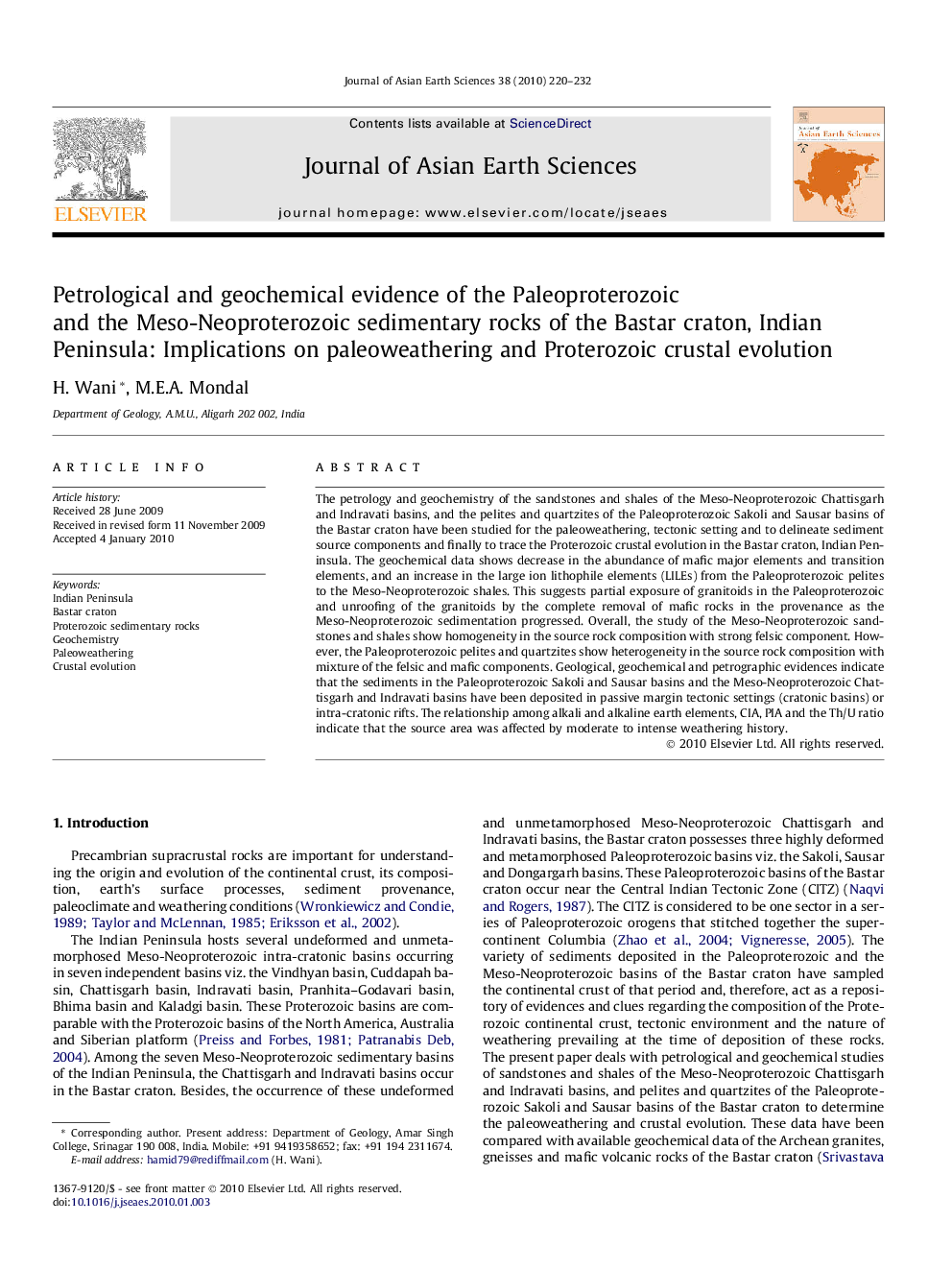| Article ID | Journal | Published Year | Pages | File Type |
|---|---|---|---|---|
| 4731952 | Journal of Asian Earth Sciences | 2010 | 13 Pages |
The petrology and geochemistry of the sandstones and shales of the Meso-Neoproterozoic Chattisgarh and Indravati basins, and the pelites and quartzites of the Paleoproterozoic Sakoli and Sausar basins of the Bastar craton have been studied for the paleoweathering, tectonic setting and to delineate sediment source components and finally to trace the Proterozoic crustal evolution in the Bastar craton, Indian Peninsula. The geochemical data shows decrease in the abundance of mafic major elements and transition elements, and an increase in the large ion lithophile elements (LILEs) from the Paleoproterozoic pelites to the Meso-Neoproterozoic shales. This suggests partial exposure of granitoids in the Paleoproterozoic and unroofing of the granitoids by the complete removal of mafic rocks in the provenance as the Meso-Neoproterozoic sedimentation progressed. Overall, the study of the Meso-Neoproterozoic sandstones and shales show homogeneity in the source rock composition with strong felsic component. However, the Paleoproterozoic pelites and quartzites show heterogeneity in the source rock composition with mixture of the felsic and mafic components. Geological, geochemical and petrographic evidences indicate that the sediments in the Paleoproterozoic Sakoli and Sausar basins and the Meso-Neoproterozoic Chattisgarh and Indravati basins have been deposited in passive margin tectonic settings (cratonic basins) or intra-cratonic rifts. The relationship among alkali and alkaline earth elements, CIA, PIA and the Th/U ratio indicate that the source area was affected by moderate to intense weathering history.
